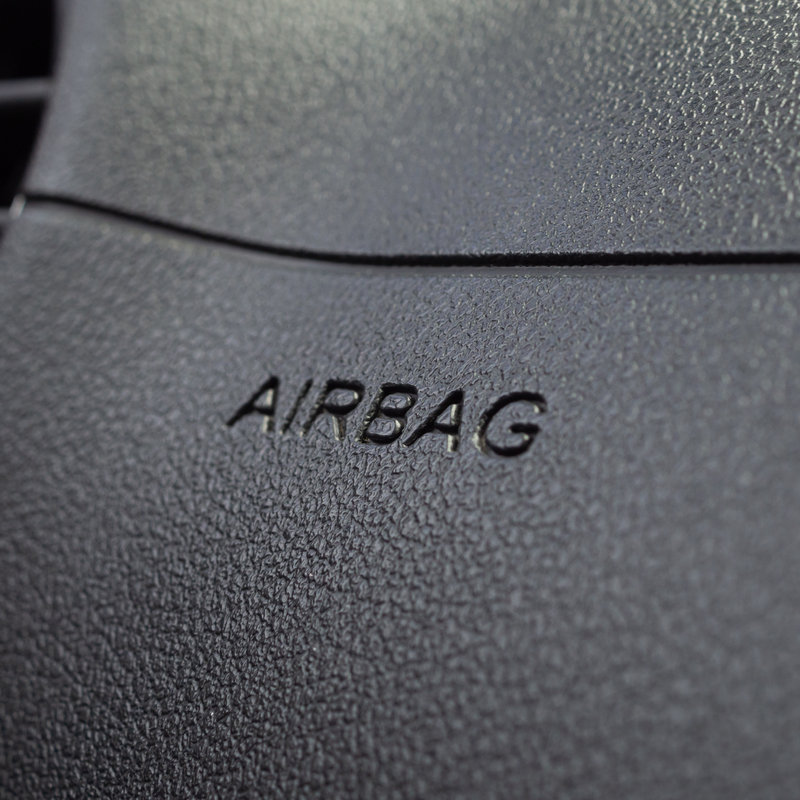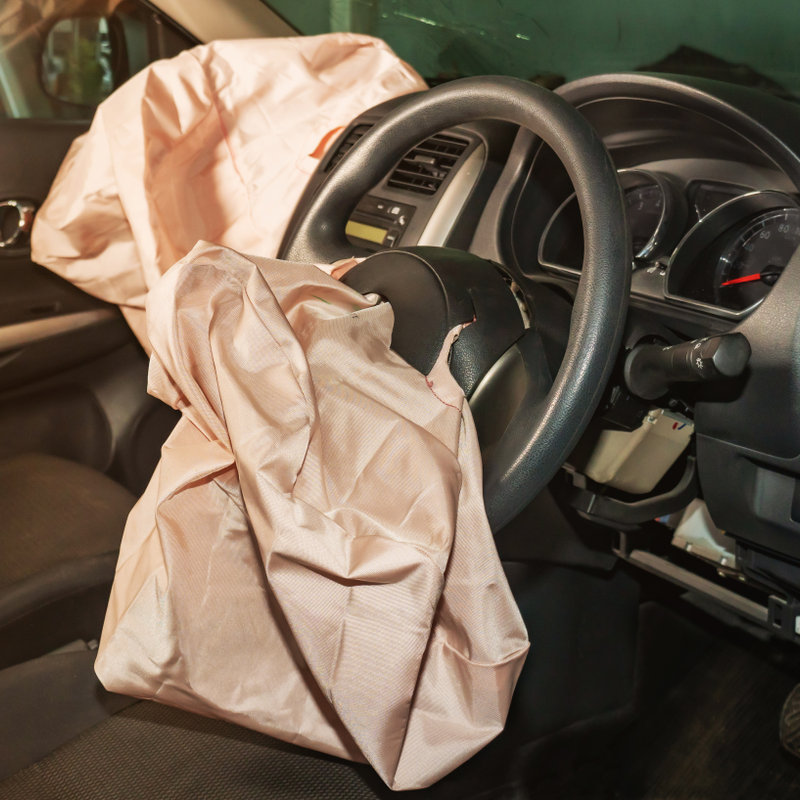
The Importance of Car Airbags
In addition to seatbelts, airbags are an important and required component in cars. The days of letting your passengers fly into the dash or the back of the front seat, which shoves the front seat passenger into the dash, are gone – and for good reason! So, when the airbags are not functioning, for whatever reason, it is important to have professional airbag repairs or replacements done immediately.
How do airbags save lives?
The Federal government has researched, studied, and tested airbags for many years. With this, it has been determined that airbags reduce the upper body or head striking the vehicle’s interior, i.e. the dashboard, steering wheel, or windshield, during a crash when used in conjunction with seat belts.
This is because the airbags inflate when the car has had an impact at a certain speed. At what speed do airbags deploy? The front airbags will typically deploy between 10 and 12 mph for unbelted occupants. For occupants that have their seatbelt fastened and secured, the front airbags will deploy at 16 mph, providing adequate protection in most cases.
When there are airbags in place, the driver and front-seat passenger wear a seat belt, their chance of dying in a head-on collision is reduced by over 25%. Serious injuries are reduced by over 12%. In the mid-1980s, over 55,000 crashes were examined where airbags were in use and deployed, saving over 300 lives.
How do airbags work?
The goal of having airbags in our cars today is to slow the forced forward motion of the driver and passenger in case of an impact within a fraction of a second. To make this happen, there are 3 parts to an airbag:
- The airbag: A thin, nylon fabric that is folded and packed into the steering wheel or the dashboard. The newer the car, there are airbags packed into the doors and seats on some models.
- The sensor: This device signals the airbags to deploy and inflate when there is an impact force that equals running into a brick wall between 10mph and 15 mph. A mechanical switch flips when there is a massive shift that closes the electrical contact advising the sensors there has been an impact.
- The inflation system within the airbags reacts sodium azide with potassium nitrate and produces a nitrogen gas that heats up and inflates the airbag.
How many years do airbags last?
Are airbags like inspection and registration, do airbags expire? For cars made today, the airbags do not expire. If you have an older vehicle, check the owner’s manual for the manufacturer’s recommendation or schedule an appointment where airbags are installed, or airbag repairs are done and have them check the ones you currently have.
When airbags come out is a car totaled?
Mechanically, no, deployed airbags won’t automatically mean your car is totaled. However, this can vary between state laws and your auto insurance policy. If your airbags have deployed, you should check your insurance policy and then check with a state auto inspection station.
Can airbags be replaced, or can airbags be reused?
Yes, in most cases, depending on the cause of the deployment, airbags can be replaced. Airbag repairs are not feasible because they are meant to be deployed once and then be disposed of and replaced.
When airbags were first introduced, a mechanic was able to reset many airbags. But today, these safety devices must be replaced once they have been deployed, regardless of whether it is the steering wheel airbag, passenger dash airbag, or any of the side panels, front or back.
How much does it cost to fix airbags?
Replacing an airbag is not cheap. The cost will depend on the make, model, and year of the car and which airbag needs to be replaced. The average cost is between $1000 and $1500 per airbag.

In Closing
In September of 1998, the Intermodal Surface Transportation Efficiency Act, which was originally introduced in 1991 was put into law. This law requires that all cars and light trucks sold within the United States to be equipped with airbags in the front, on both driver and passenger sides.
Today, after a certain year of manufacturing, all vehicles are required to have operating airbags. Repairs or replacements must be made to meet the state’s safety specifications for a vehicle to pass inspection. If you have the airbags in your vehicle repaired or replaced, you must have a certificate from where the work was done stating what was done with the date of the work. Classic cars are exempt from this law because of the impracticality and danger of retrofitting the required control modules, sensors, and other components in cars that were never designed to have airbags. However, there are seatbelts that can be installed in a classic car to give the driver and passengers some additional safety.
